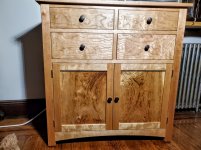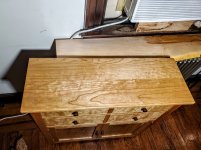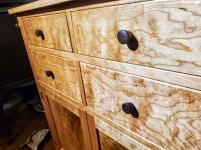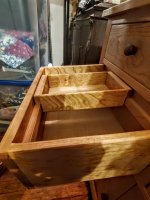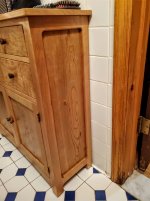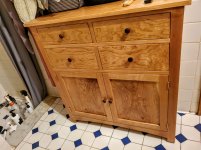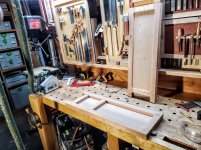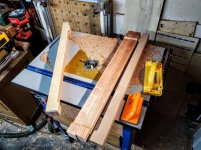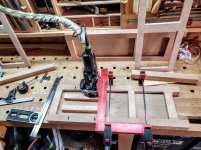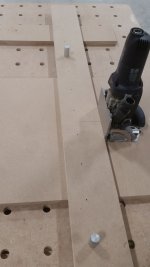ear3
Member
Recently finished a small cherry cabinet for storing toiletries and other stuff in my downstairs bathroom. I'm not sure I quite achieved what I was trying to do with the grain -- I chose some of the more wild grain patterns from the boards I had on hand to do the doors and drawers. But there's a marked contrast in effect between the upper and lower portions due to the different grain patterns, which is exacerbated by the fact that 1) I hand planed the drawers and therefore the grain pops considerably more than on the doors, whereas I only sanded the door panels; and 2) I bookmatched the door panels with a resawn board.
Over time this contrast will lessen as the color of the cherry deepens -- in fact this has already begun as you can see in the pics of the cabinet in situ. So I'm hoping after a year or so the color will meet somewhere in the middle.
[attachimg=1]
[attachimg=2]
[attachimg=3]
[attachimg=4]
[attachimg=5]
[attachimg=6]
[attachimg=7]
Over time this contrast will lessen as the color of the cherry deepens -- in fact this has already begun as you can see in the pics of the cabinet in situ. So I'm hoping after a year or so the color will meet somewhere in the middle.
[attachimg=1]
[attachimg=2]
[attachimg=3]
[attachimg=4]
[attachimg=5]
[attachimg=6]
[attachimg=7]

